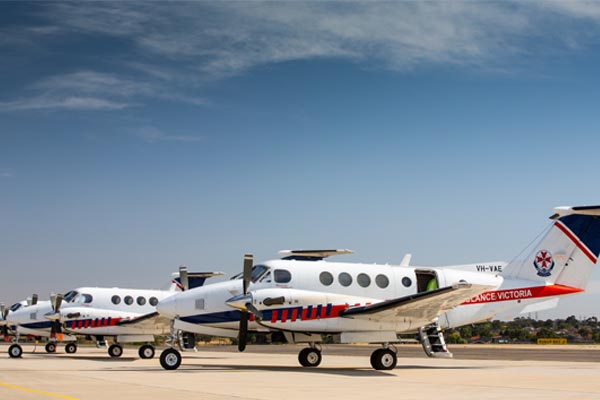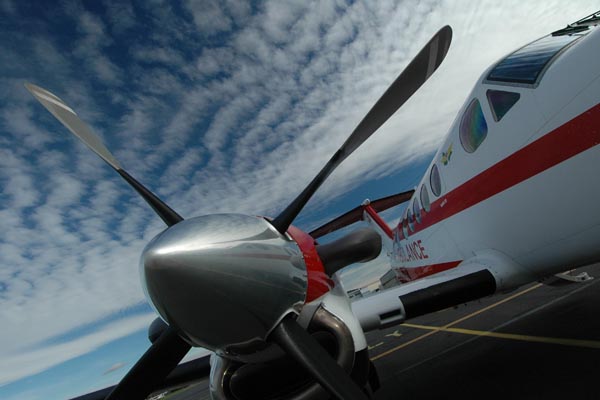Fixed Wing Aircraft fleet ticks over 40,000 flying hours
May 7, 2019in News, Operations
Ambulance Victoria’s current Fixed Wing Aircraft fleet has completed over 40,000 flying hours since being introduced to the service in 2011.
40,000 flying hours is equivalent to approximately 500 flights around the world, or 20 visits to the moon and back.
The total hours are spread across a fleet of four Beechcraft Super King Air B-200 that operate from Essendon Airport and are managed by contractor Pel-Air aviation.
“Pel-Air do commendable work in partnership with Ambulance Victoria to deliver a service to the Victorian community, including the residents of our neighbouring states as required,” says Manager of Air Operations at Ambulance Victoria Anthony De Wit.
The aircraft have completed more than 2,850 days of work when measured against their average 14-hr working day responding to up to 10 cases.
Since their introduction, they have required 531 tyre changes to support approximately 58,100 landings.
The air ambulance fleet of four aeroplanes and five helicopters – based at Essendon, the Latrobe Valley, Bendigo and Warrnambool – provide a vital link between rural communities and metropolitan health services.
The fixed-wing aircraft are routinely used to perform inter-hospital transfers for regional Victorians needing to visit larger metropolitan hospitals to receive specific medical care, such as chemotherapy or radiotherapy in non-emergency cases.
These transports are generally undertaken when the distance is greater than 150 kilometres from the Royal Melbourne Hospital, and priority is given to patients who are furthest away.
The advantage of a fixed-wing aircraft is that they can travel faster and further than a helicopter, and have additional transport capacity.
In contrast, most helicopter callouts are for life-threatening emergencies, which are mainly trauma and paediatric cases, with a small amount of search and rescue.
The advantage of a helicopter is it can land in many places and is not restricted to an airport runway.
The fixed-wing aircraft – typically staffed by ALS Flight Paramedics – and helicopters – staffed by MICA Flight Paramedics – reach across Victoria and into parts of southern New South Wales, northern Tasmania and parts of South Australia.
In 2017-2018, they responded to 7,241 incidents.


